Oh fermented pickles, how I love thee.
I don't know what it is about summer vegetables, but I go star crazy. It's like I can't help myself. A fancy purse holds no candle in my book next to a bag of freshly picked green beans or eggplant.
I can hear you now:
So you're telling me, Shaye, that you'd prefer a bowl of tomatoes over a new piece of fancy jewelry?
Yes.
And you'd rather have a bag of zucchini than a fancy new party dress?
Yes and yes. Call me crazy, but yes.
You're crazy.
I know. Fair enough.
Not that I don't love jewelry and party dressed (after all, if you followed me on Facebook over the weekend, you no doubt heard about my shopping weakness). But despite the appeal of new clothing and fancy jewelry, I still find myself so drawn to that sweet, Summer produce.
Each morning, while I sip on my first cup of coffee, I find myself wandering around our potager garden – eager to peak on the newest blossoms and growth.
Unfortunately, our cucumbers haven't quite arrived yet – after all, they were planted a month late. But lucky for me, there is a fantastic organic gardener just down the road who was happy to let me purchase some of her extra bounty. I picked up twenty pounds of pickling cucumbers and green beans for preservation. This summer, in the spirit of gut-friendly-preservation-methods, I decided to try my hand at lacto-fermented pickles. Sauerkraut was a huge hit in our home, so why the heck not?
Lacto-fermenting the cucumbers utilizes preservation through the form of lactic acid instead of the traditional vinegar-based preservation methods so popular in our day and age. Back-in-the-day, this was really the only preservation method that they had. Good ‘ol salt and lactic acid.
And y'all know me. I'm a sucker for traditional, old things.
Except for old underwear.
I've got to draw the line somewhere.
Lacto-Fermented Pickles Recipe
You will need:
– Pickling cucumbers (about 4-5 per quart jar)
– 1 tablespoon sea salt
– Pinch red pepper flakes
– 5 peppercorns
– 1 clove garlic, peeled and smooshed
– 1 tablespoon fresh dill
– 4 tablespoons whey (I strain my homemade yogurt through a flour sack to get whey and then keep a jar full in the fridge at all time)
Step One: Wash and cut the cucumbers into 1/4″ slices. Place tightly in a clean, quart-sized Mason jar.
Step Two: Add in the salt, red pepper flakes, peppercorns, garlic, and dill.
Step Three: Drizzle in that delicious whey.
Step Four: Top off each jar with filtered water (we just purchased a Berkey and LOVE IT…I am astounded at the difference it has made in our water), making sure to leave 1″ of headspace at the top of each jar. Also make sure that all of the cucumbers are submerged beneath the water line. If it's above the water, it will spoil.
Step Five: Put lids tightly on the tops of the jars.
Step Six: Let the jars remain at room temperature for 2-3 days. If the lid of the jar will not dent-in when pushed with your finger, gently lift the lid barely and allow the ferment to ‘burp'. This will help to release any build up gases in the jar.
Step Seven: After the fermentation period, transfer the pickles to cold storage (65 degrees of below). I just keep ours in the fridge.
Obviously, the biggest downside of lacto-fermenting all this summer goodness is that my fridge is already starting to grow full of them! I can see how investing in an old fridge to keep in the shop would be super helpful. Regardless, I'm still pretty dang excited about these pickles.
I've read that putting a grape leaf in each jar will help the cucumbers to retain their crispness, but alas, I have no grape leaves at my disposal. Bummer.
Such an unfair life. Not having grape leaves at your disposal at all times.
Ya, I know. It's really tough.
You know what's not tough, though?
Making these pickles. Georgia and I had three jars whipped up in less than five minutes. One for Mommy. One for Daddy. And one for Georgia.
Owen's not a pickle eater yet. Once he gets off this breast-milk-kick he's been on for the last eight months, maybe. Just maybe.
But not yet. Mama's heart's not ready for that yet.
I digress.
Just make the pickles, man.
More fermented and pickled recipes:
Fermented Pickles: Feed the gut, man!
- Pickling cucumbers (about 4-5 per quart jar)
- 1 tablespoon sea salt
- Pinch red pepper flakes
- 5 peppercorns
- 1 clove garlic (peeled and smooshed)
- 1 tablespoon fresh dill
- 4 tablespoons whey
- Wash and cut the cucumbers into 1/4″ slices. Place tightly in a clean, quart-sized Mason jar.
- Add in the salt, red pepper flakes, peppercorns, garlic, and dill.
- Drizzle in that delicious whey.
- Top off each jar with filtered water, making sure to leave 1″ of headspace at the top of each jar. Also make sure that all of the cucumbers are submerged beneath the water line. If it’s above the water, it will spoil.
- Put lids tightly on the tops of the jars.
- Let the jars remain at room temperature for 2-3 days. If the lid of the jar will not dent-in when pushed with your finger, gently lift the lid barely and allow the ferment to ‘burp’. This will help to release any build up gases in the jar.
- After the fermentation period, transfer the pickles to cold storage (65 degrees of below). I just keep ours in the fridge.


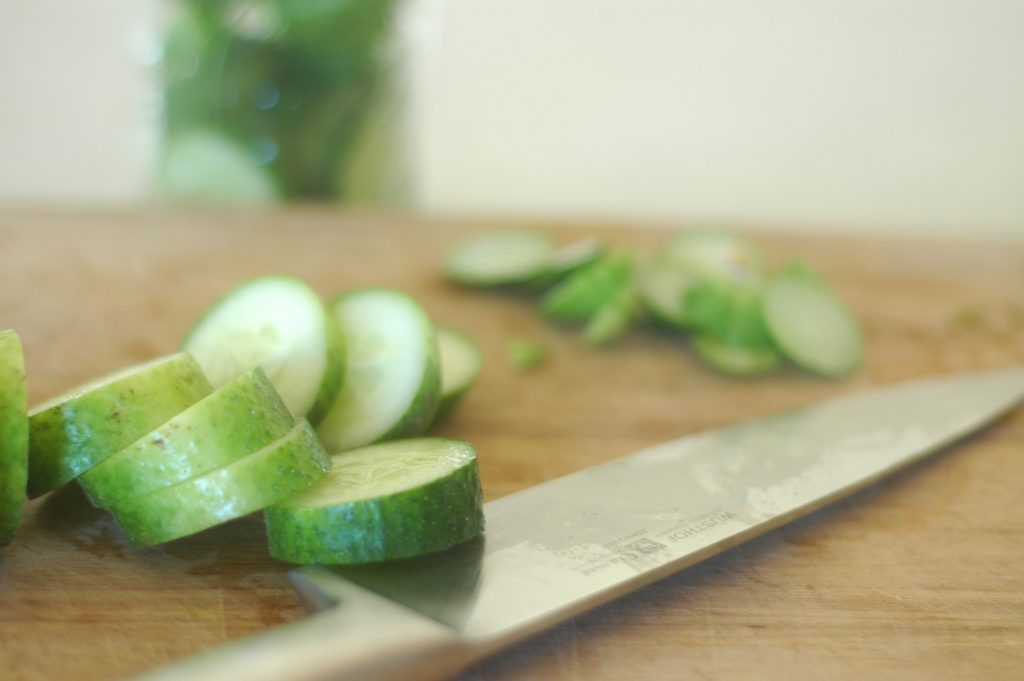
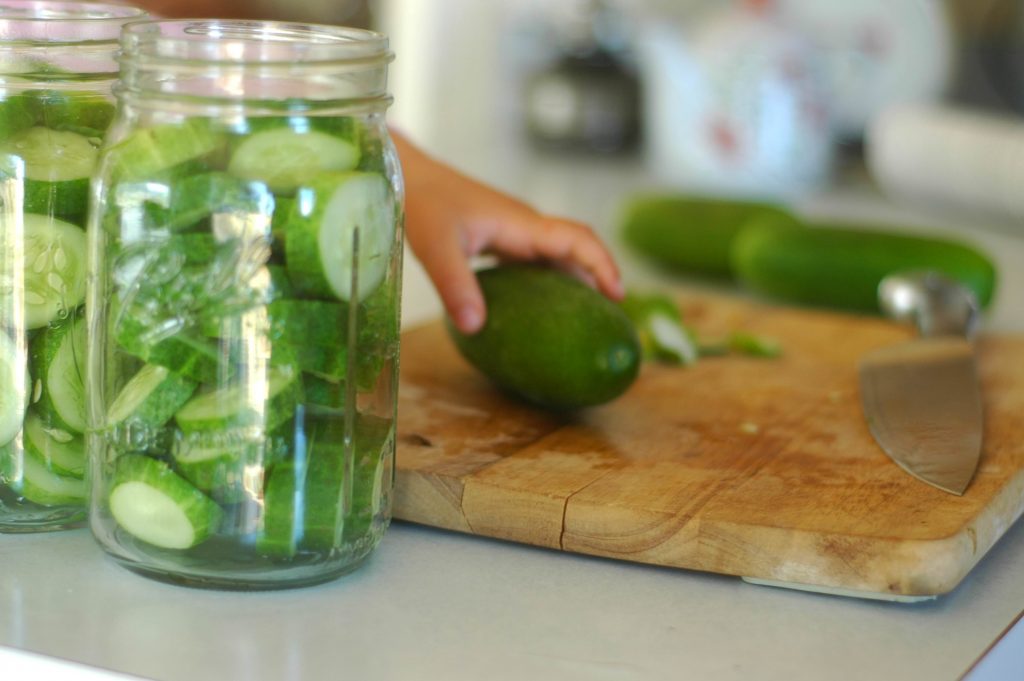
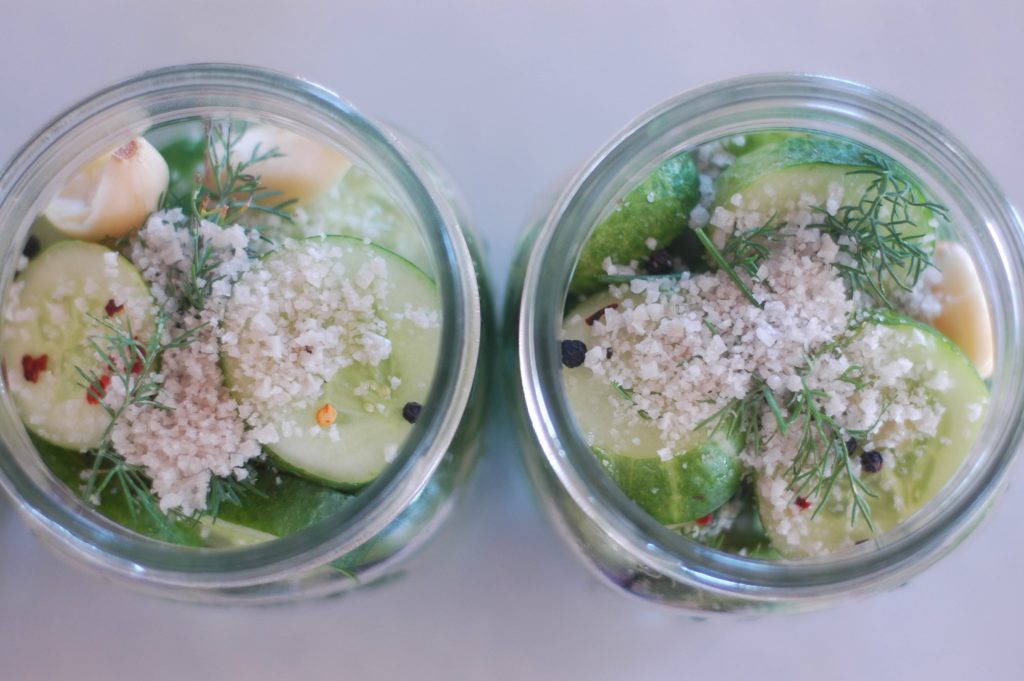
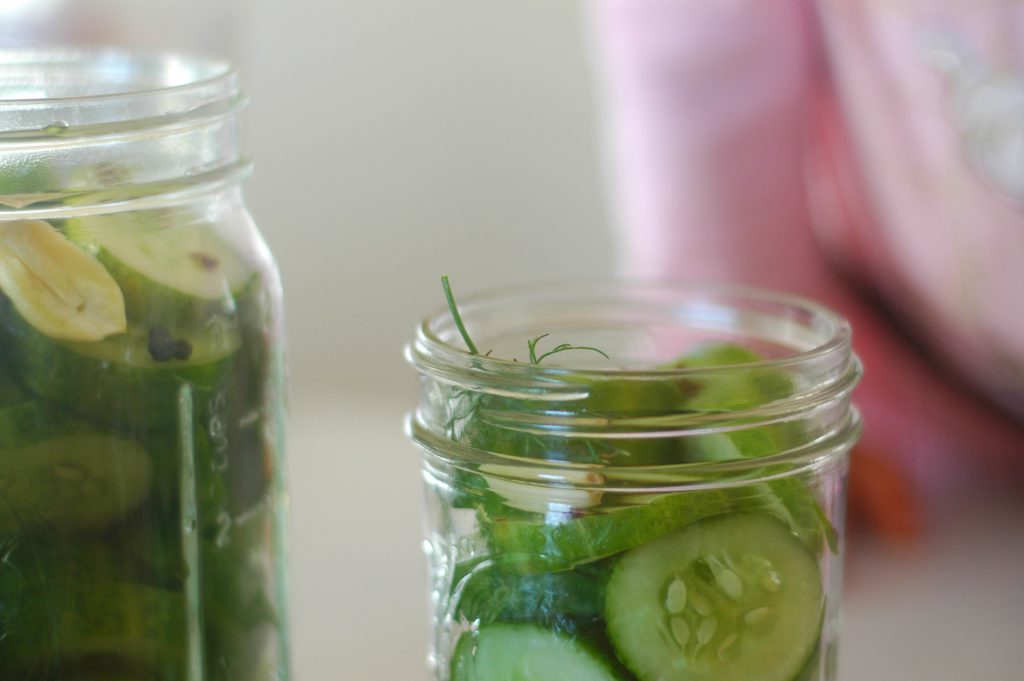
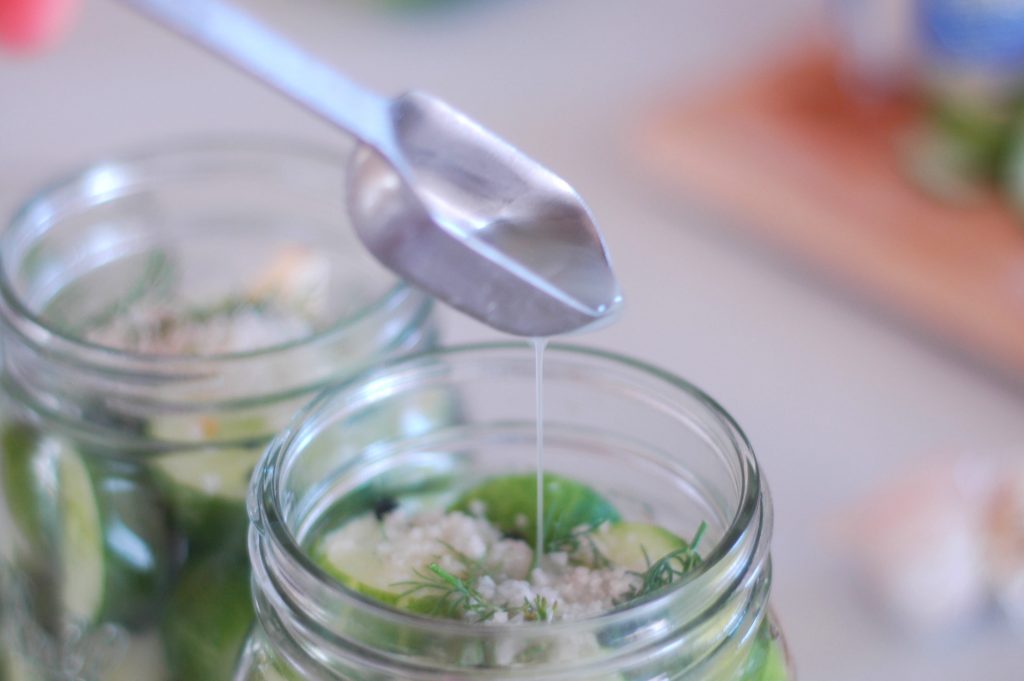
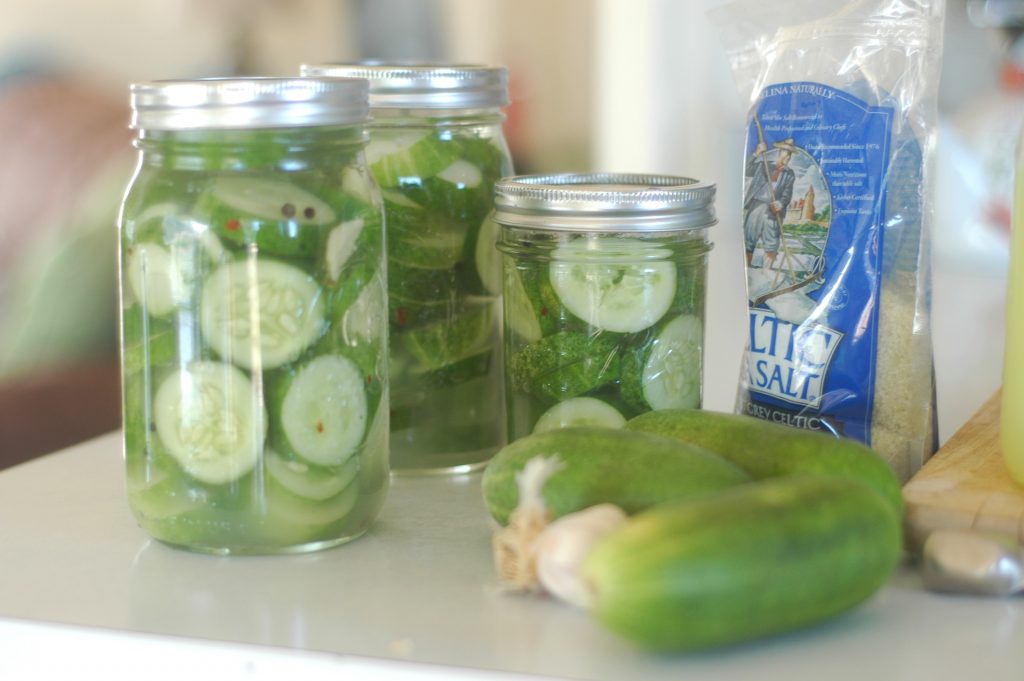

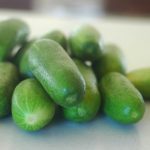
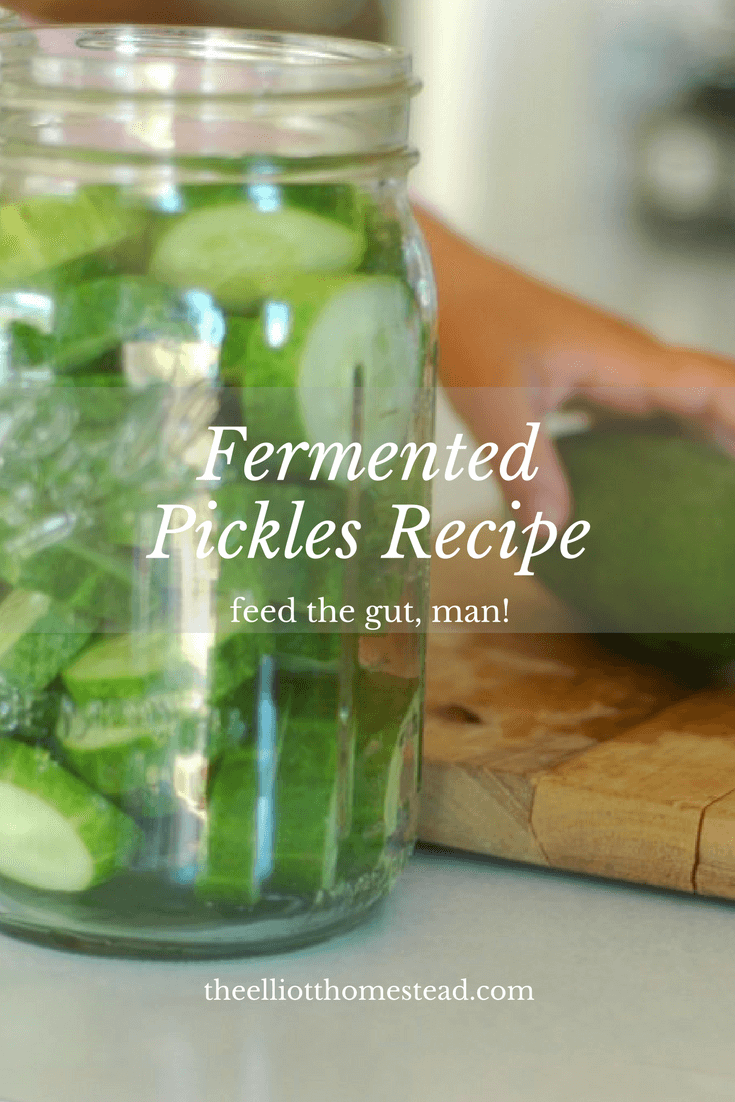
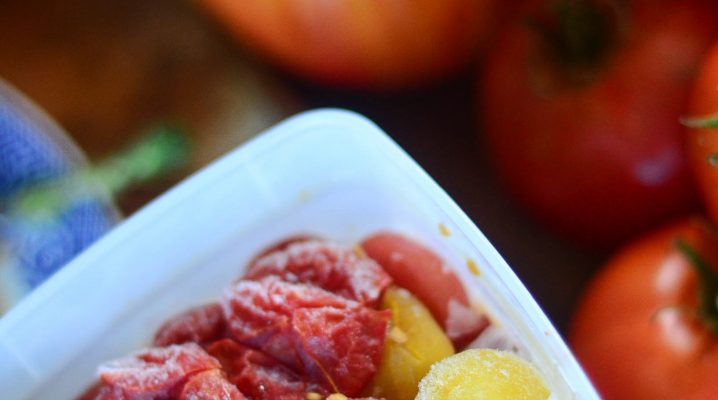
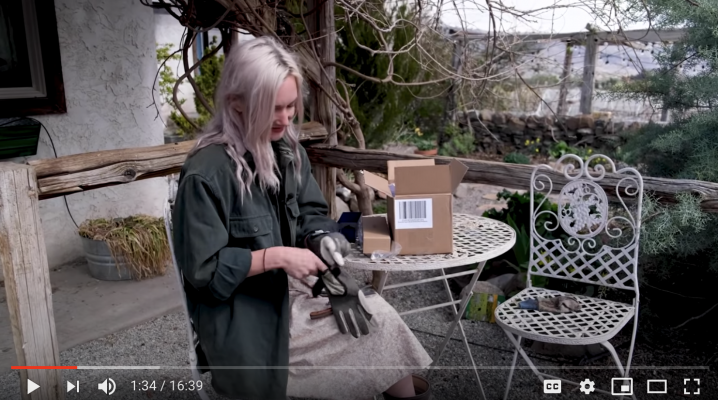
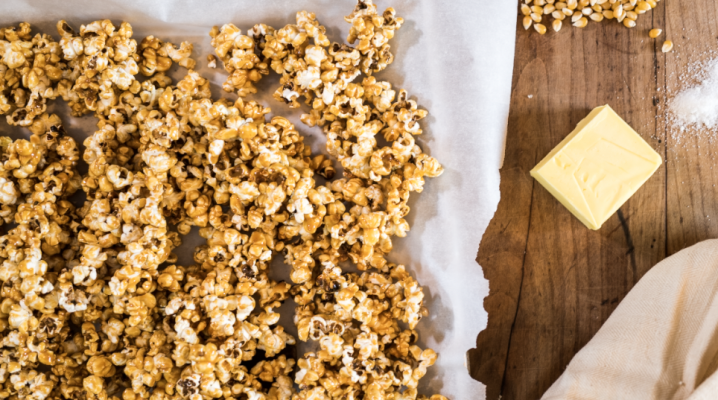
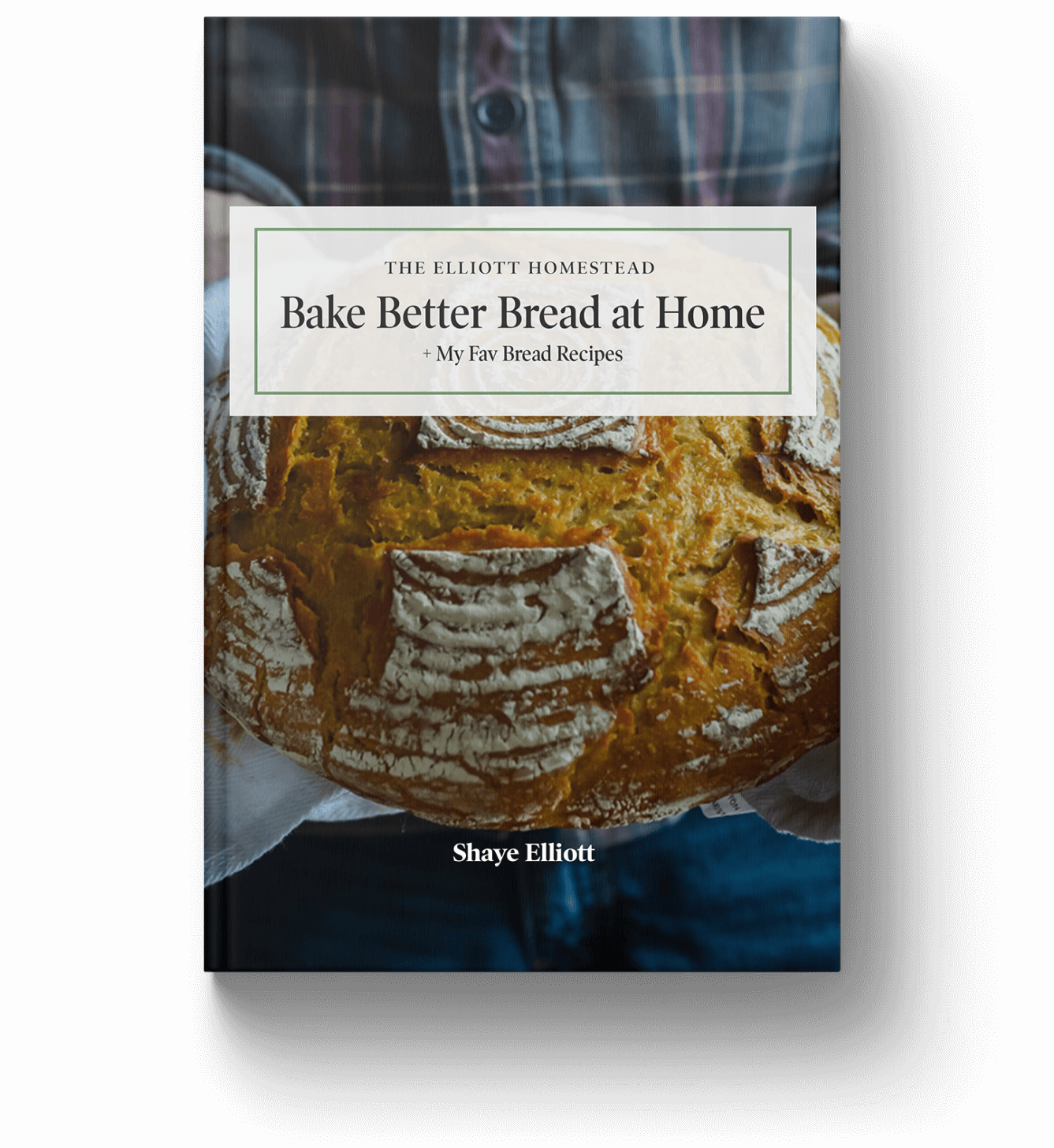
Mine come out slimy if I slice them. Plus all I have is dill seeds with this work? Also no whey!
Not sure but I was wondering if I can preserve the pickles that are done fermenting & how
About the grape leaf~ I did some research a few years ago and it is the tannin’s (sp?) in the grape leaves that keep them crispy. I read that you can also use an oak leaf and it will do the same thing. HOWEVER— I would be shocked if you can’t find one of your “free delivery” farmers and sweet talk him out of some grape leaves!
Do you think I could use milk kefir instead of whey?
Silly question, but are all the ingredients per jar?
I have a fermentation book that states you can use black tea for tannins and this will also keep them crisp. This is what I have done and they seem to do the trick.
Hi Kelsey, would you be interested in sharing your recipe please
i tried two tricks last year for crispness and I think the one that worked was the “putting them on ice for several hours” method. i don’t know, google it!
I tried to lacto ferment pickles last year and they all went rotten, trying again tomorrow
can you make it without the whey or is there a non-dairy substitute? we have several in our family with dairy allergy 🙁
You ought to be able to make this without the whey or a substitute. Maybe add a tad more salt. Or you could buy some Caldwell’s starter cultures for fermenting. I ferment things with just the salt. The difference is you get more of a probiotic punch with the whey or starter cultures.
Thank you, i’ll have to try it!!
Not sure how long ago you asked this, but any fermented brine would work as a starter culture. You could use ACV if you wanted, or kombucha
I’ve heard that you can use blackberry leaves instead of grape leaves for the tannin to keep your pickles crisp. And I have a backyard FULL of blackberry vines. 🙂
Ok, silly question…I’m going to start my own fermenting (pickles and sauerkraut). I already make my own yogurt and strain it with flour sacks, therefore collecting the whey. How long would a batch of whey last in the fridge once I’ve collected it from my yogurt (which is literally like, milk the cow in the morning, put the cultured milk in the Yogotherm, sit for 8-10 hours, and then strain for 12+ hours in the fridge)?
thanks Shaye! I have used the grape leaf and it is true about the crispness. I inherited a really huge grape arbor when i moved to my farm almost 8 years ago. its grapes are worthless, but I have made the best of it.
my chickens love when i break off green vines and they eat all of the leaves, they provide shade for the chooks and a few times a year i put one leaf in a jar of pickles lol!
If I could transport this oldie but flourishing grape (tree) to you I would. 🙂
Can I use whey from plain organic yogurt? Also how long will they keep in the fridge? Thanks for sharing!!! 🙂
I use bay leaves instead of grape leaves to help retain the crispness of the pickles like my Grandmother did. I also use an ice bath prior to preparing the pickles. Both things seem to keep my pickles nice and crisp. But it won’t add crispness to already wimpy softened cucumbers.
How long can pickles sit in brine before eating?
Hi all. So…I got delayed in my canning process- life got in the way and 3 weeks have elapsed since I salt brined my pickles. I’ve rinsed them and they are still firm and yet pickle like. How long is safe for pickles to sit in brine at room temperature before eating them?
I have about 15 quart jars I’m hoping I haven’t utterly compromised, ack! They’re in a 2% brine (2 cups water, 1 tbsp salt)